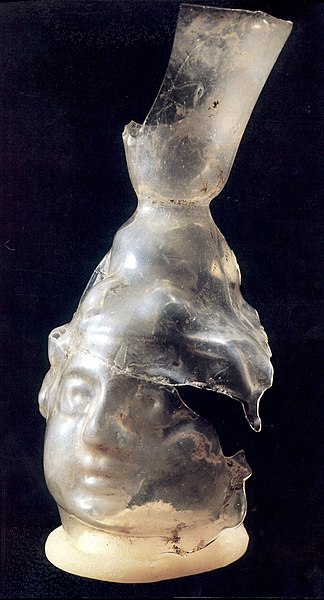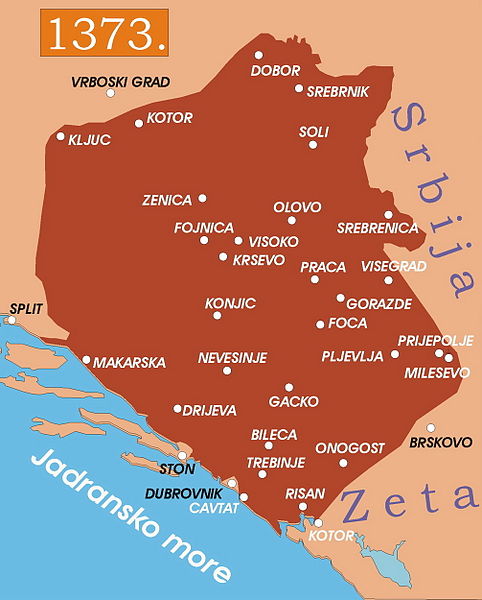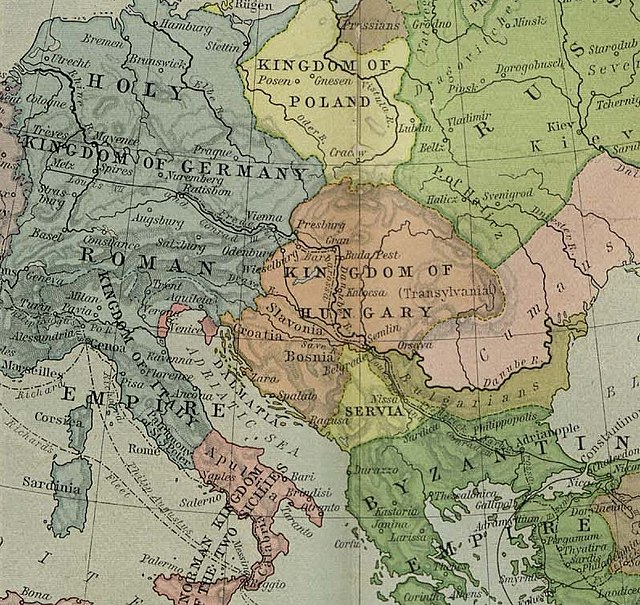History of Bosnia and Herzegovina
Bosnia and Herzegovina is a country in Southeast Europe on the Balkan Peninsula. It has had permanent settlement since the Neolithic Age. By the early historical period it was inhabited by Illyrians and Celts. Christianity arrived in the 1st century, and by the 4th century the area became part of the Western Roman Empire. Germanic tribes invaded soon after, followed by Slavs in the 6th century.
2nd c. Roman glass from Bosanski Novi
Ban Kulin stone engraving with Bosnian Cyrillic
The Banate in 1373, shortly before its elevation to kingdom
The Emperor's Mosque is the first mosque to be built (1457) after the Ottoman conquest of Bosnia.
Zachlumia or Zachumlia, also Hum, was a medieval principality located in the modern-day regions of Herzegovina and southern Dalmatia. In some periods it was a fully independent or semi-independent South Slavic principality. It maintained relations with various foreign and neighbouring powers and later was subjected to Kingdom of Hungary, Kingdom of Serbia, Kingdom of Bosnia, and at the end to the Ottoman Empire.
Zahumlje in 1190 as a lower part of Kingdom of Hungary
Miroslav Gospel, one of the oldest surviving documents written in Serbian recension of Old Church Slavonic, was created by order by prince Miroslav of Hum
Part of Zahumlje under Medieval Serbian Kingdom in 1265







